A while ago, I realized something about my Twitter (X) timeline:
I was following too many new accounts — accounts created last month, last week, or literally yesterday. Most of them tweeted for a few days and disappeared. No consistency. No depth. Just noise.
I wanted the opposite.
Old accounts.
People who had been here for years, contributed for years, and built trust over time.
The problem?
Twitter doesn’t give you any proper way to filter accounts by join date.
You can’t say “show me people who joined before 2015” or “show me users who’ve been here for at least 3,000 days.”
Nothing. Zero.
So I needed a deeper search tool — something that could actually filter accounts by their join dates, not just keywords or hashtags.
That’s how I ended up using Circleboom Twitter.
Why Does “Join Date” Even Matter?
Not all Twitter accounts are equal.
Older accounts usually bring something valuable:
- They’ve been around long enough to prove they’re real.
- They tend to be more consistent.
- They’ve seen trends rise and fall.
- They post with experience, not with hype.
I didn’t want to follow accounts that might disappear next week.
I wanted people who had been on Twitter for years — not days.
And if you’re curating a high-quality timeline, building a list, researching a niche, or just avoiding spam accounts created recently, join date is one of the most important filters you can use.
But again… Twitter doesn’t give you that option.
Twitter’s Search Is Good — Just Not Deep Enough
Twitter search can show you:
- Tweets by date
- Tweets by keyword
- Tweets from certain people
But when it comes to finding accounts, Twitter is extremely limited.
You can’t filter users by:
- Join date
- Location
- Followers/following counts
- Verification status
- Engagement
- Interests
- Account age
So if you want to find “people who joined before 2014,” Twitter simply can’t do it.
That’s when you need something more advanced.
The Tool I Use: Circleboom Twitter
When I wanted to filter accounts by join date, I started using Circleboom Twitter, and it made the whole process effortless.
Why Circleboom?
Because it’s not just a scheduler —
it’s a full Twitter (X) management platform, and it’s also an official partner of X, which means it works through official APIs (safe, compliant, no sketchy automation).

Its search features go way beyond what Twitter offers.
You can search users based on:
- Interests/keywords
- Locations
- Verification status
- Follower or following ranges
- Activity level
- And most importantly → Join date
Circleboom lets you pick any time range you want.
You can literally say:
- “Find accounts that joined before January 1, 2014.”
- “Show users who joined between 2012–2016 and live in the UK.”
- “Find verified designers who joined before 2015 and are located in New York.”
I actually did this — I searched for accounts that had been on Twitter for at least 3,000 days and followed the ones who matched the niche I wanted.
And the quality difference was huge.
How to Search Twitter Accounts by Join Date (Step-by-Step)
Let's say you wanted to find accounts interesting with NFTs on Twitter:
Step #1: Go to the left-hand menu, open the Search tab, and click “Live Smart Search”
You’ll land on the updated Live Search page.

Step #2:Enter your keyword in the search bar.
Circleboom scans names, bios, profiles, and tweets in real time.
Type something like NFT and hit “Search.”
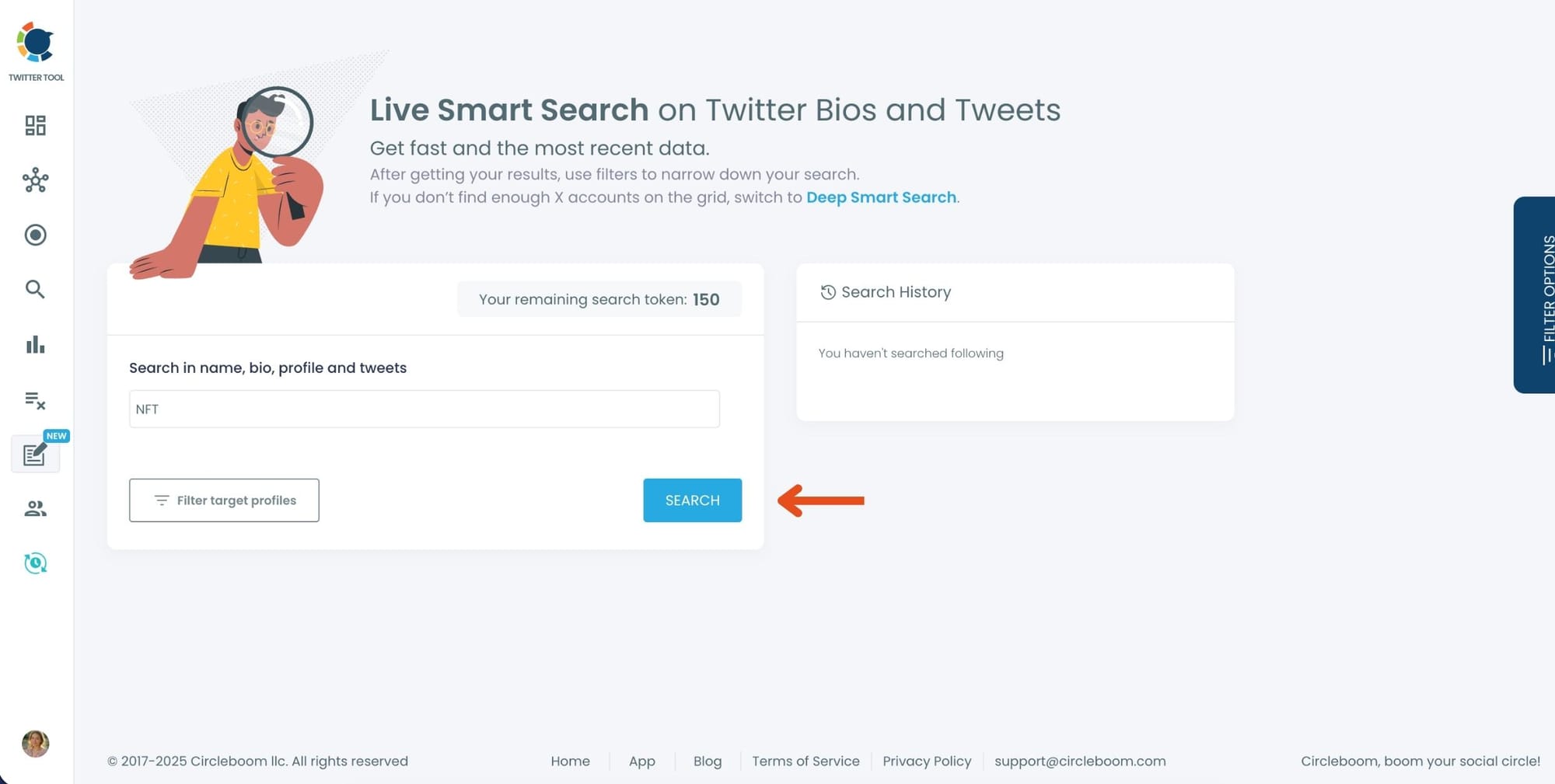
Step #3: Use the Filters — Especially the Join Date Filter
Your results will appear instantly.
Now open the Filter Options panel to refine the list.
Here you can filter users by:
- Activity level
- Verification
- Follower / following range
- Join date
- Location
- Tweet count
To focus on account age, scroll to the Join Date filter and choose:
- Accounts that joined before a specific date
- Accounts that joined after a specific date
- Or a full custom date range
This is where you can find accounts from 2010, 2012–2016, users, etc.

Step #4: Select the accounts you want to follow in bulk.
You can tick them one by one or use the selection tools at the top.
Once selected, click the “Follow” button.
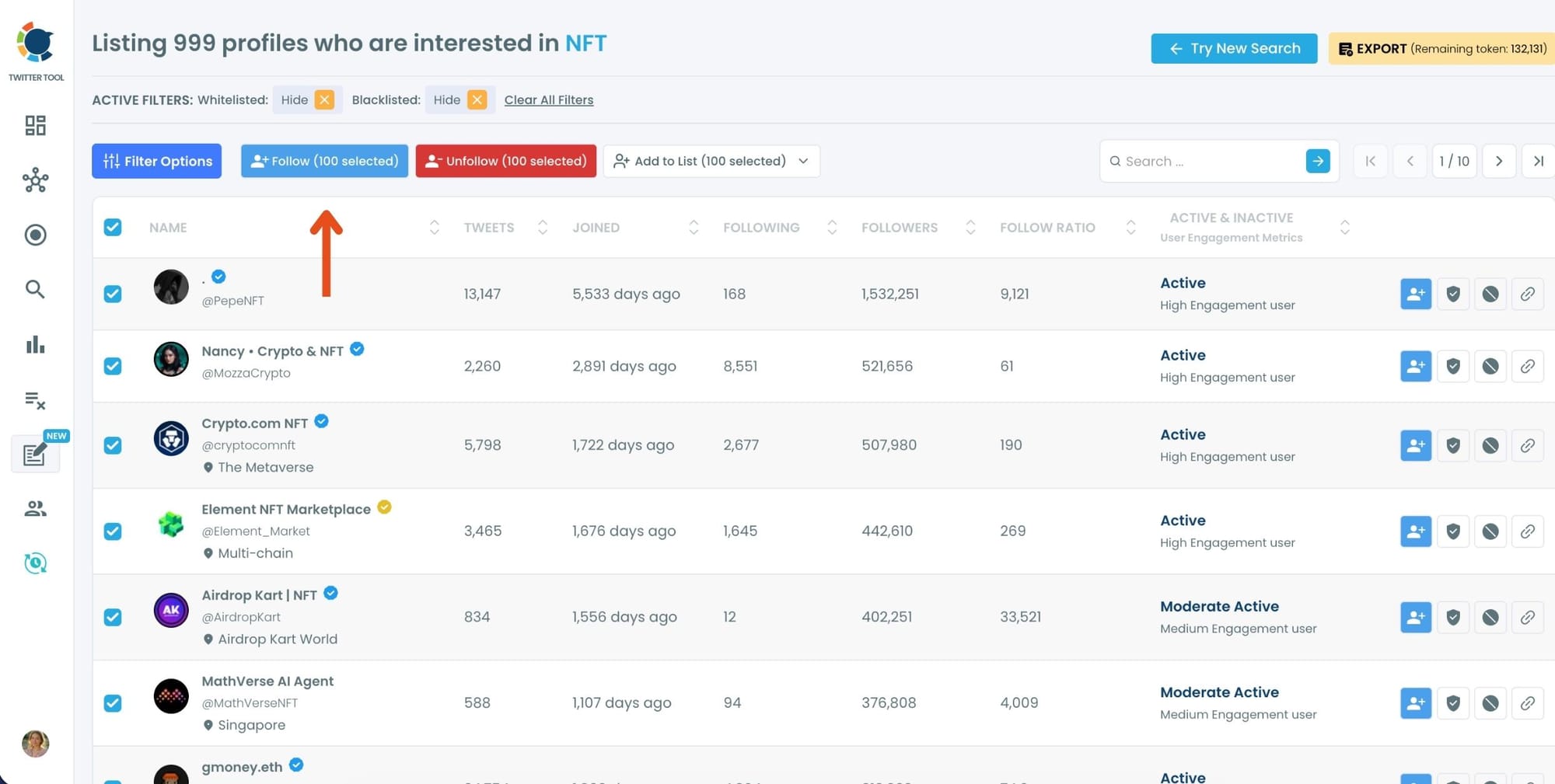
Step #5: A safety pop-up will appear.
Circleboom reminds you of X’s follow limits and keeps your account safe by preventing aggressive or risky actions.
Read the message and click “Got It” to continue.
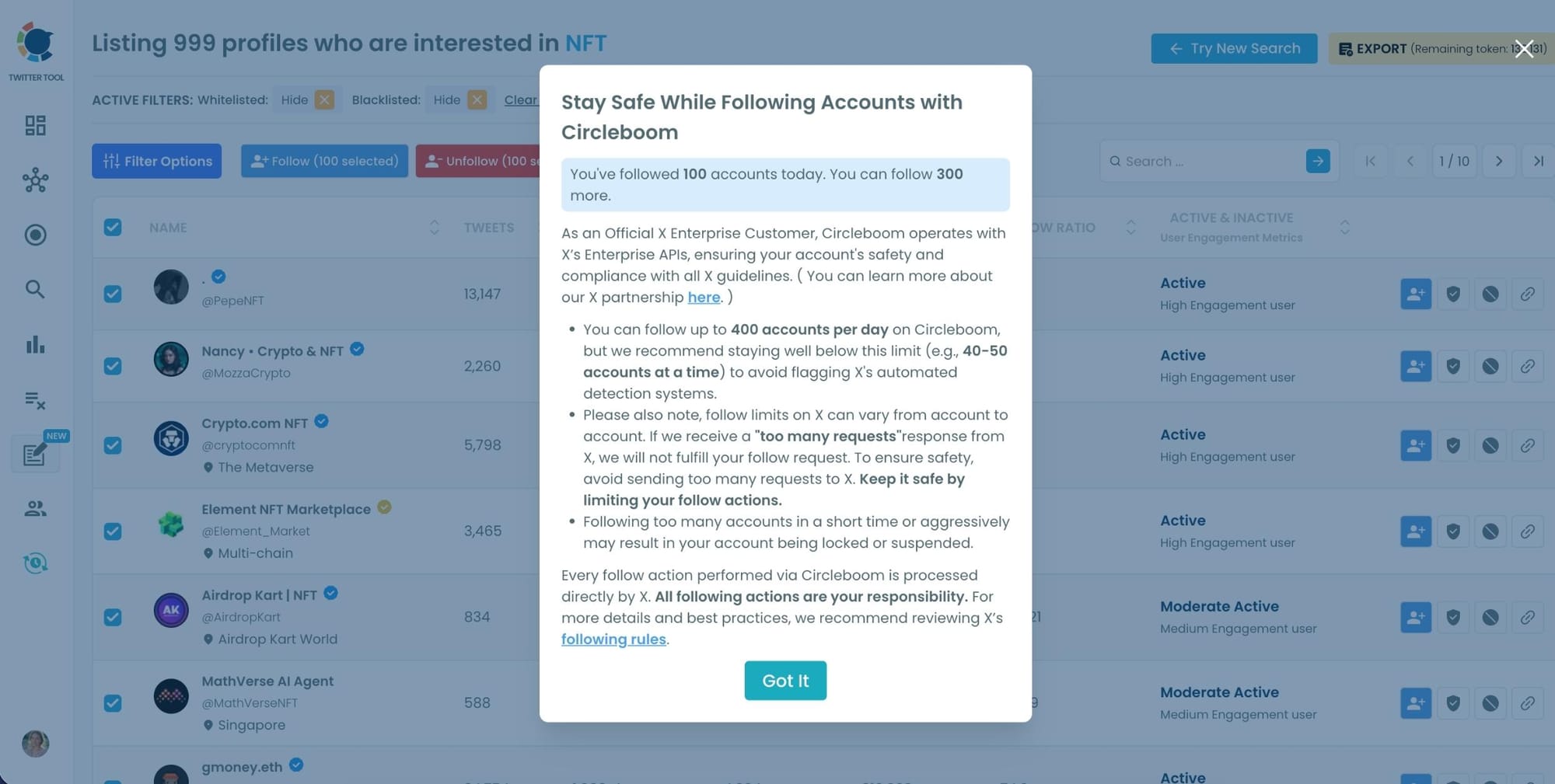
Your follow requests will begin processing automatically.
Step #6 (Optional): You can also:
• Add the selected users to a Twitter List,
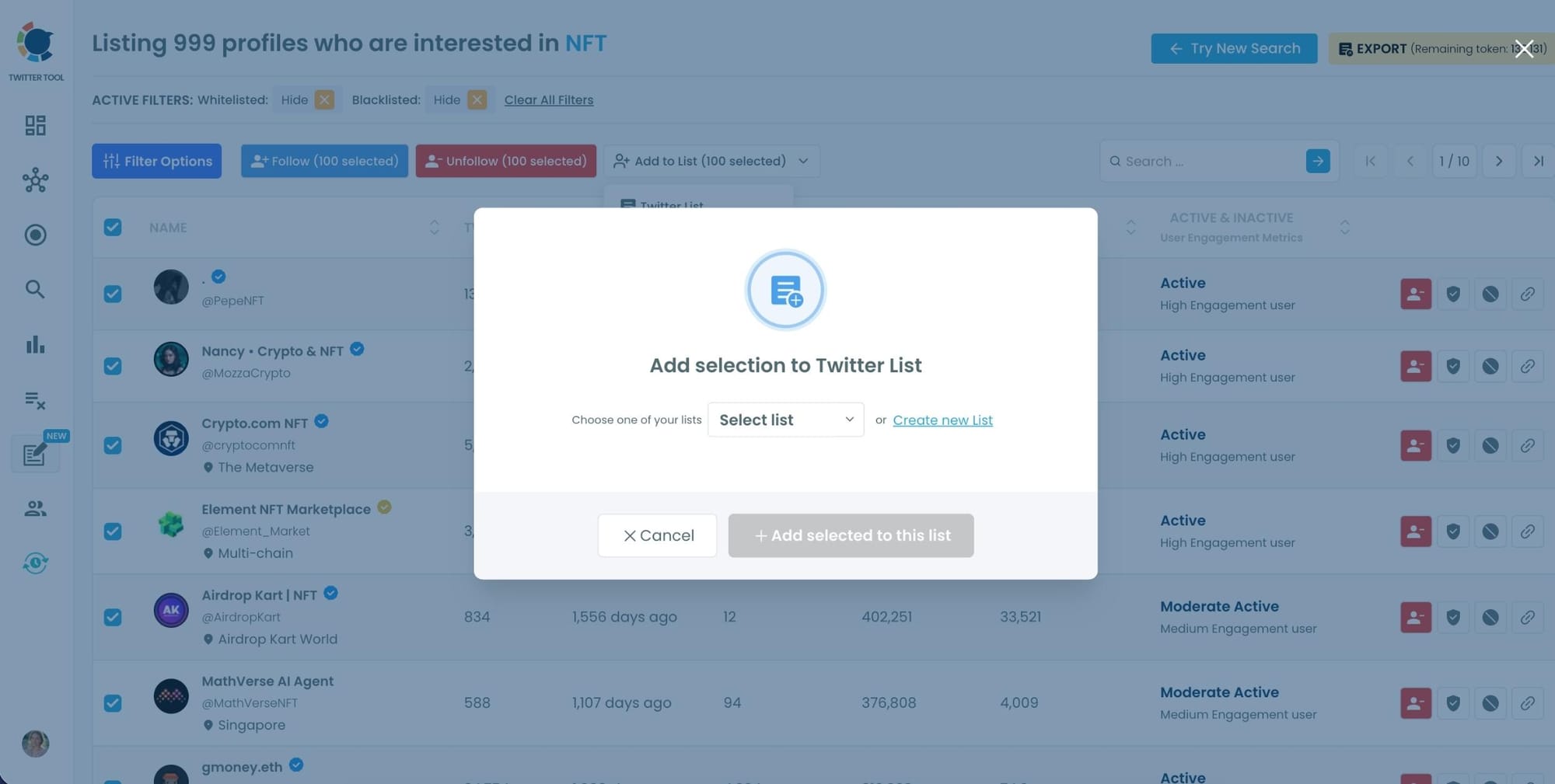
• Or Export the entire result set as a CSV file for outreach, influencer targeting, or audience building.

Extra Ways Join Date Search Helps
Using join date filters isn’t only for finding “old” accounts.
You can also:
- Identify early adopters of a niche
- Build expert lists
- Avoid accounts created during spam waves
- Discover long-term voices in your industry
- Filter out low-quality new profiles
It’s one of the most underrated ways to find better accounts on X.
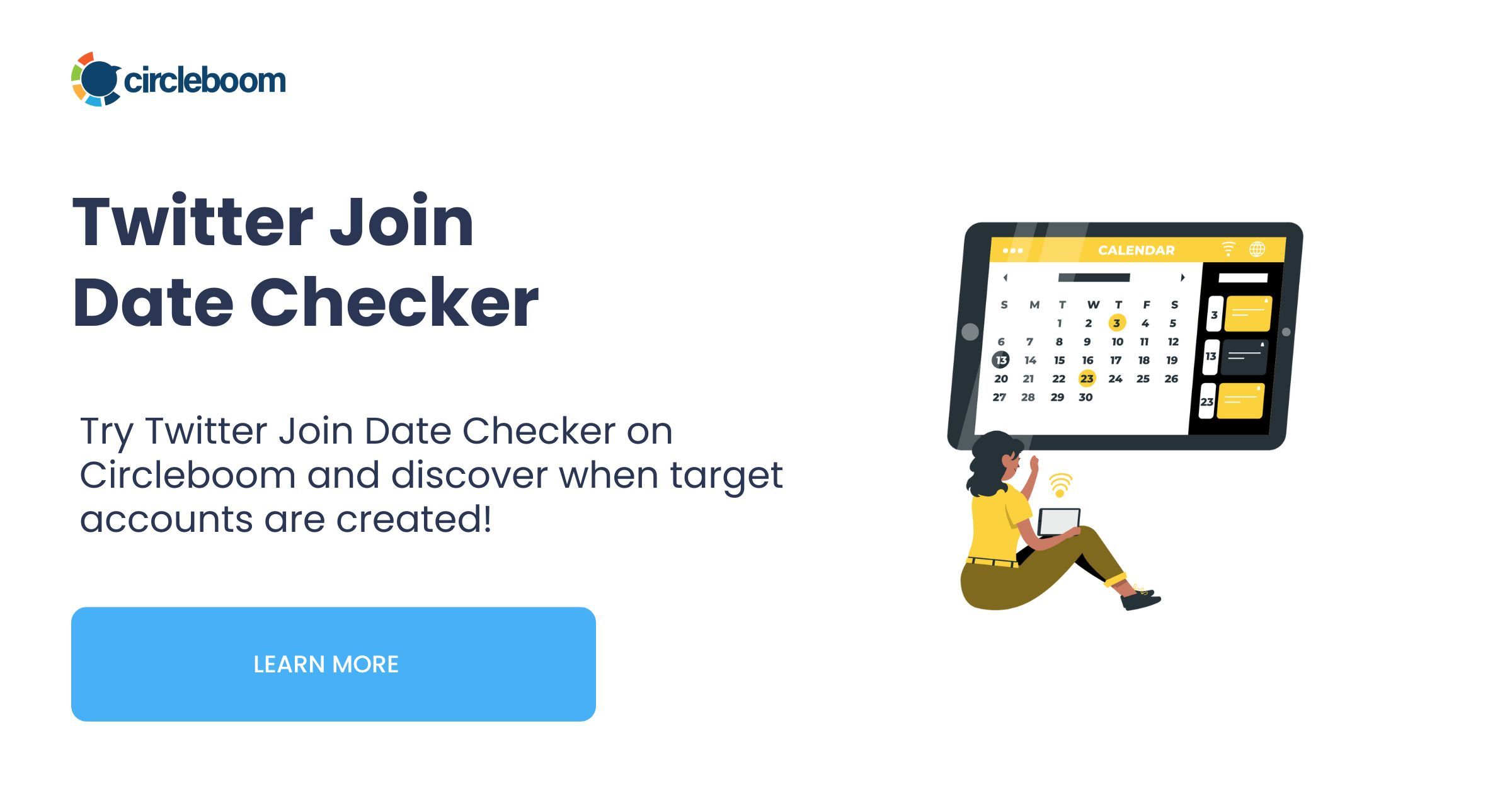
Why Circleboom Makes This So Easy
Circleboom’s search is simply built for what Twitter’s native search cannot do.
It lets you combine:
- Join date
- Keywords
- Location
- Follower range
- Verification
- Activity level**
in one single search.
If you’re serious about curating your timeline, growing your audience, or finding reliable accounts, this is the kind of tool you need.
And since Circleboom is an official partner of X, it’s safe to use and built on top of official data.
Conclusion
I didn’t want to follow random, brand-new accounts anymore.
I wanted people who had proven themselves over years, not weeks.
Twitter didn’t give me the filters I needed.
Circleboom did.
With its advanced join-date search, I found accounts that had been here for 8 years, consistently sharing valuable content, and I followed them with confidence.
If you want a smarter, more stable, more meaningful Twitter timeline, searching by join date is one of the most powerful methods — and Circleboom is the best way to do it.






